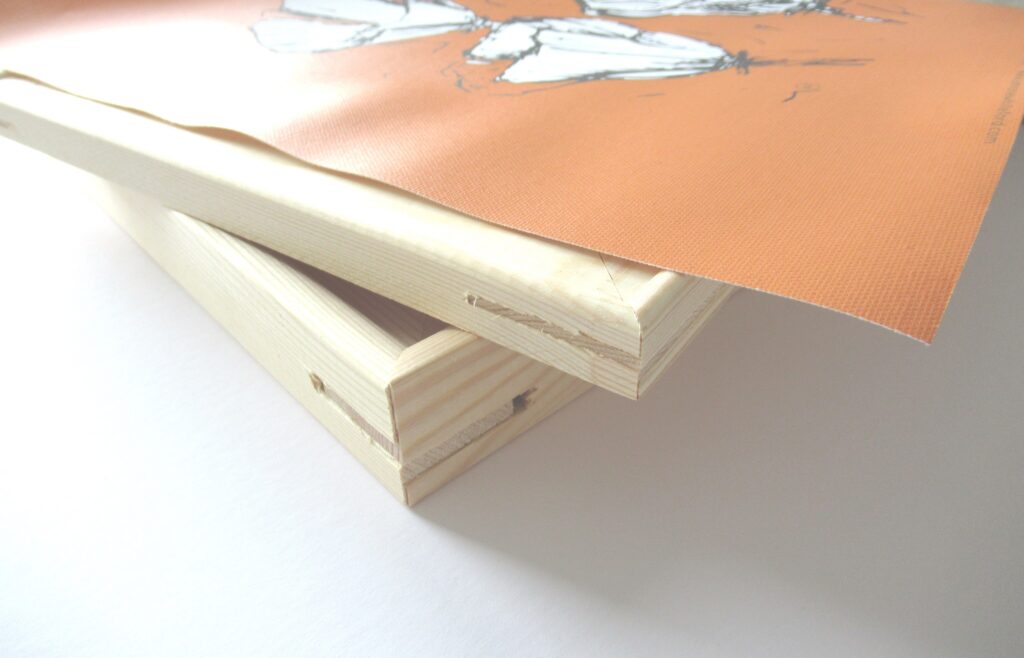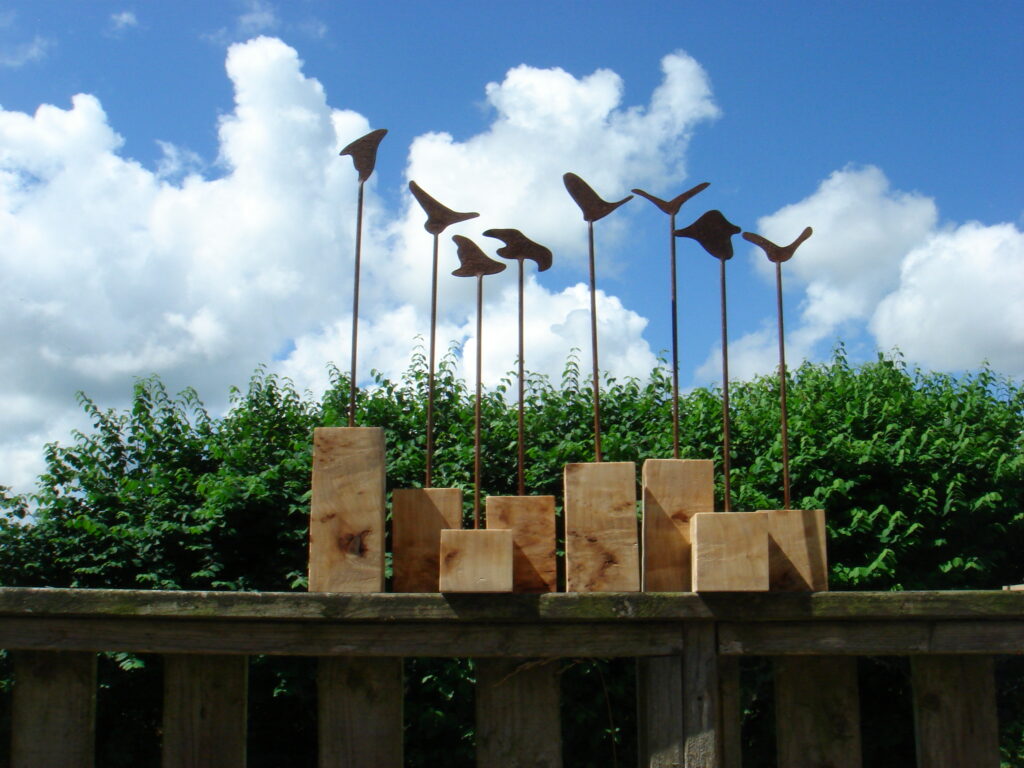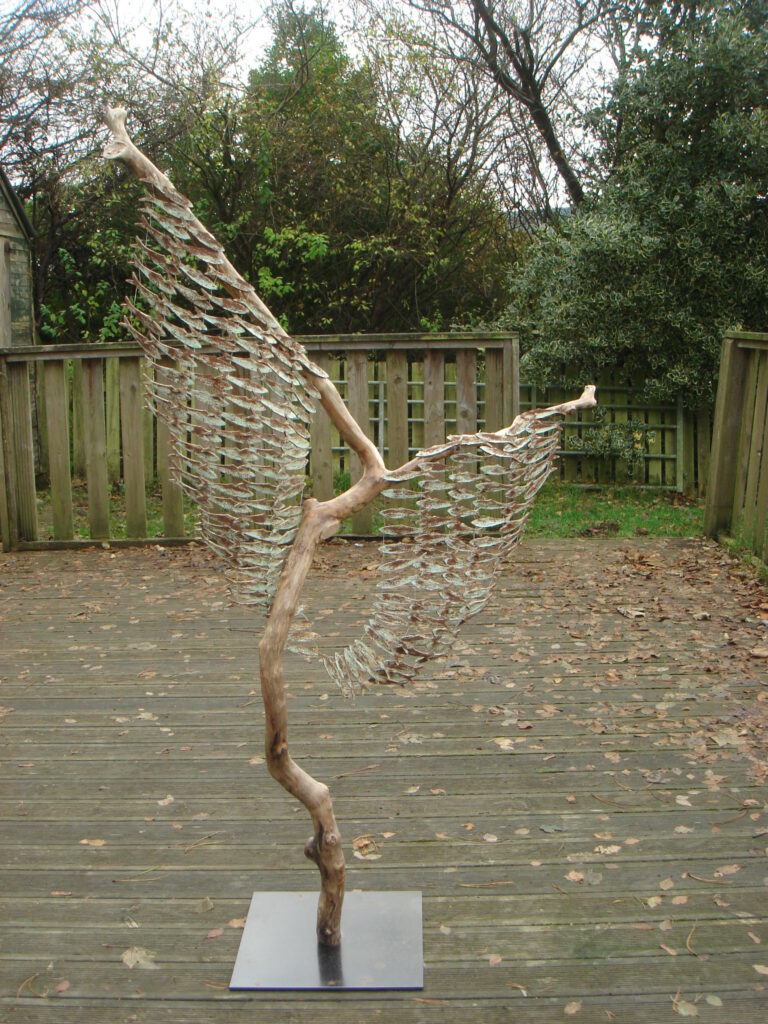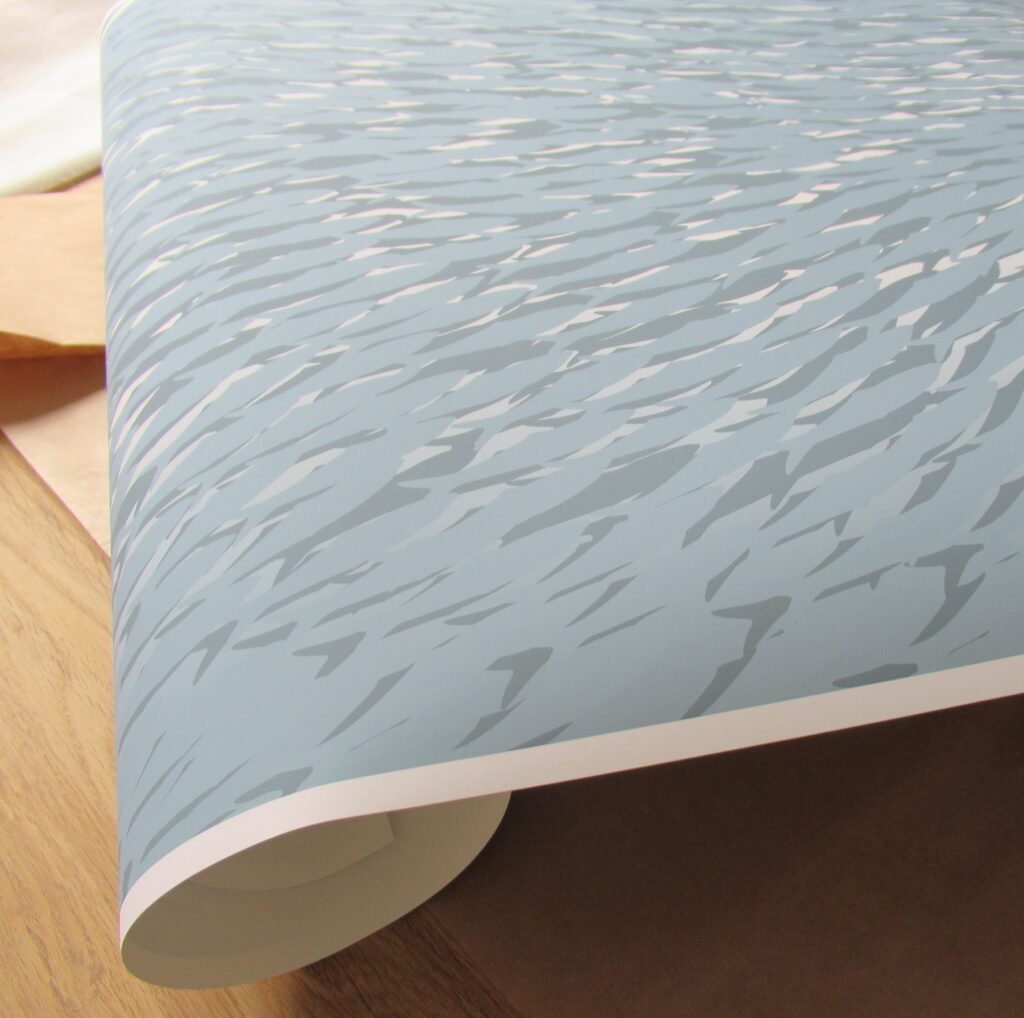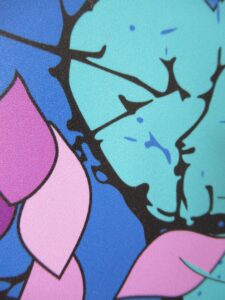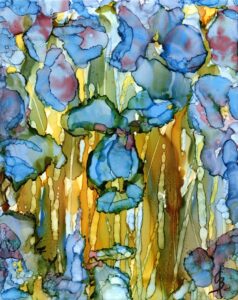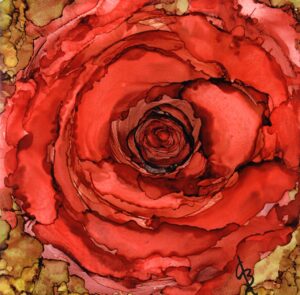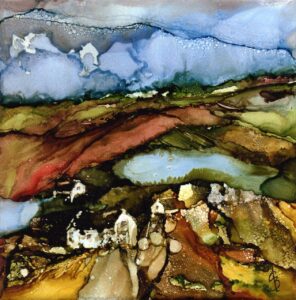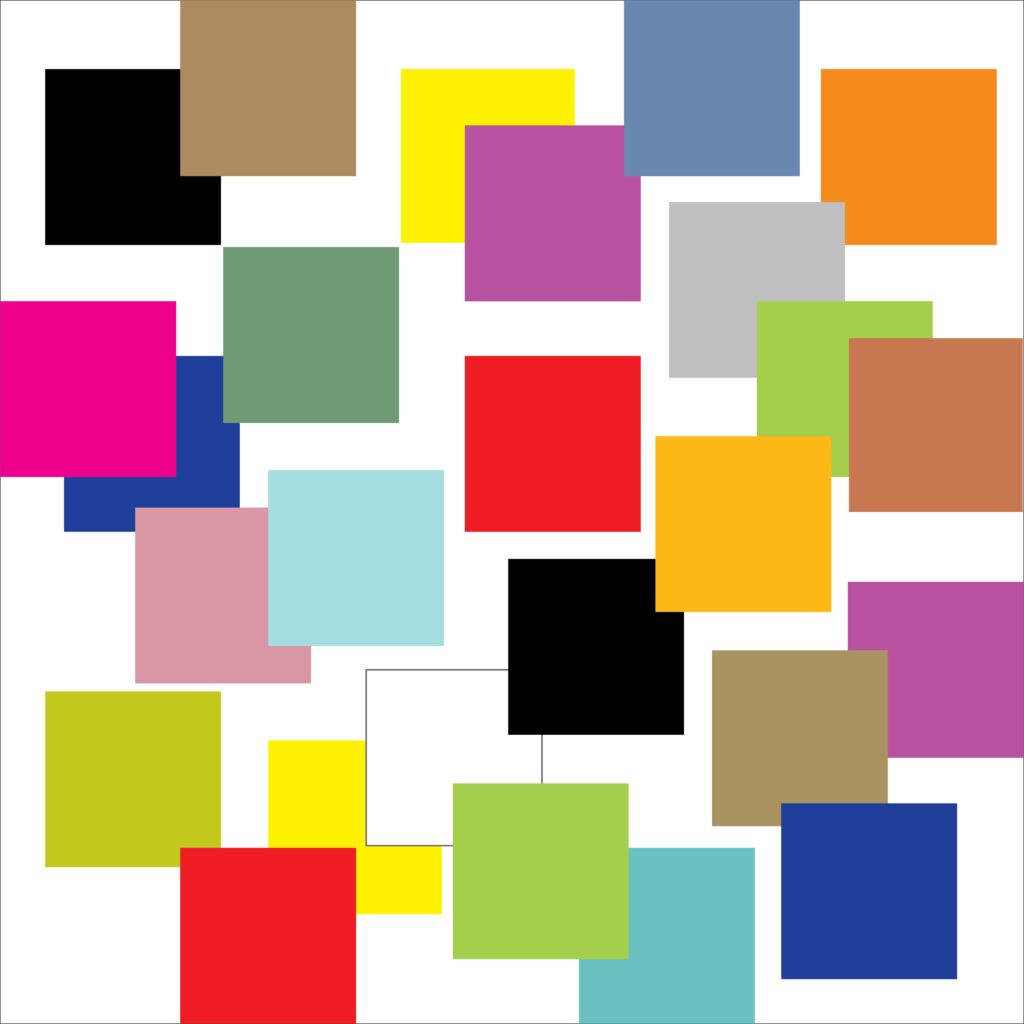by Simone Whiteford 17 Nov 2020
Background and development of the Series
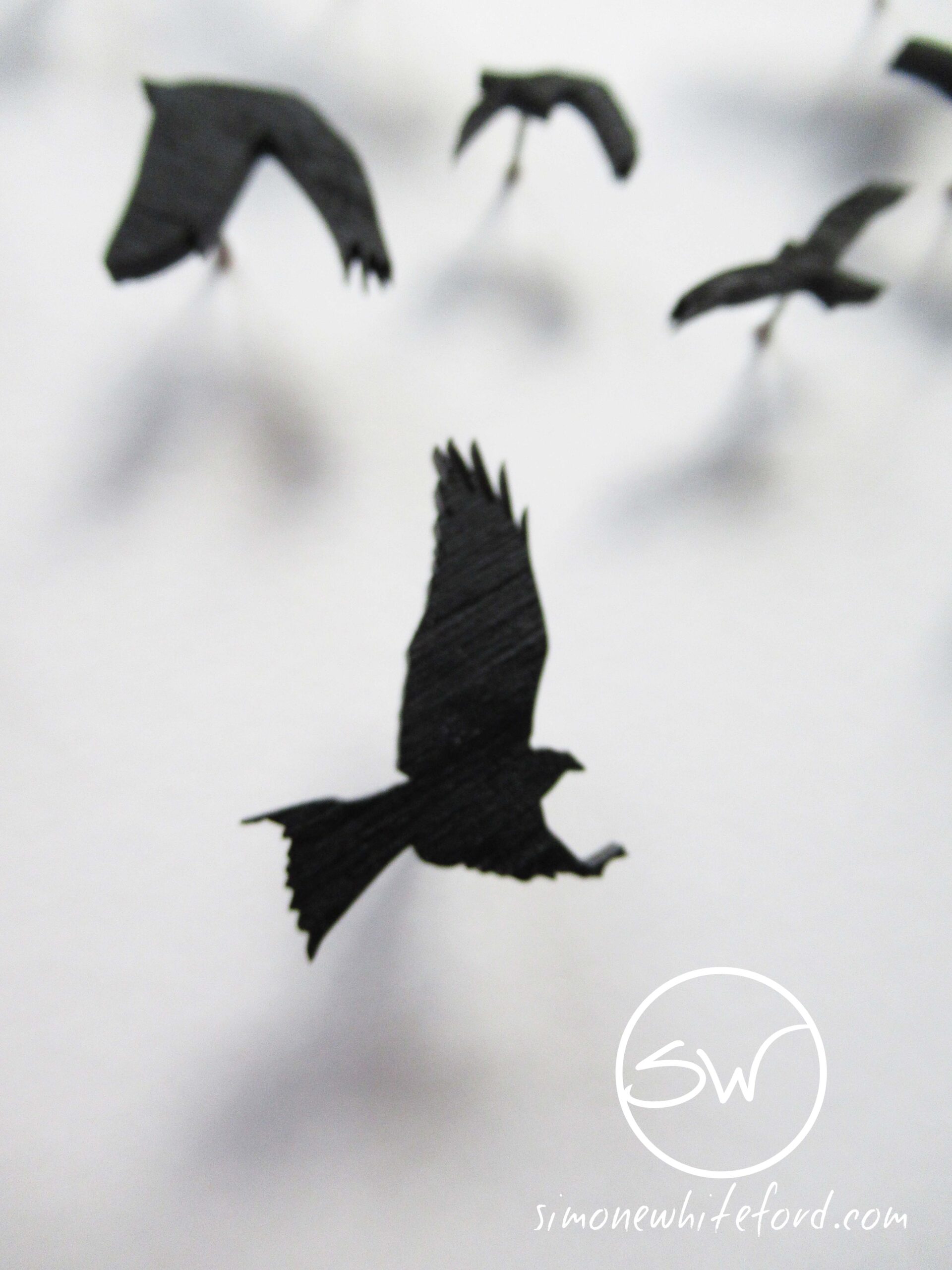
In 2015, when I exhibited in Ayr as part of the Open Studios Ayrshire, I shared one of the stunning rooms in Rozelle House with a very interesting and experienced Artist, Ed Slater.
Although knowing art was always what I wanted to do, not knowing where to start, earning a living and moving country, all got in the way of becoming a professional artist. However, after joining the Open Studios Ayrshire in 2014 I was able to talk to other artists and started exhibiting.
In the end, Ed Slater was the one artist who gave me the most relevant and useful tips and advice. (If you want to know what Ed’s advice was, you have to wait for my next blog on art exhibition) For now, let’s go back to the birds. As mentioned Ed and I shared a room over the duration of a weekend and we had a lot of time to talk about art.
I showed some of my freestanding sculptures and various stone carvings. Amongst it was a white wooden board with some of my black coloured plywood birds on wire, no frame and all really a bit amateurish I have to admit.
Because of the way it was finished I just put it down on the floor and was still considering even exhibiting it. Ed saw it, took it and hung it on the wall. At first I was quite perplexed, but Ed being a big guy and all I kept relative quiet and left it hanging.
More and more people started to arrive and to my surprise, many seemed very drawn to the birds, so much so, that one person asked for a framed commission, which I happily made. Well, that was the start of the framed birds, I started with Swallows, which came about by playing around with Inkscape and some bird photos of mine (I love vector graphics).
Because I do not copy other artists including photographers, I got in contact with a local wildlife photographer, Jim Thomson. Jim was so kind to give me some exquisite photos of birds and allowed me to use them for further Bird Series. I added Golden Plover, Red Kites and Starlings for some bigger murmurations pictures. I am still planning on adding more species to the existing Series in the future.
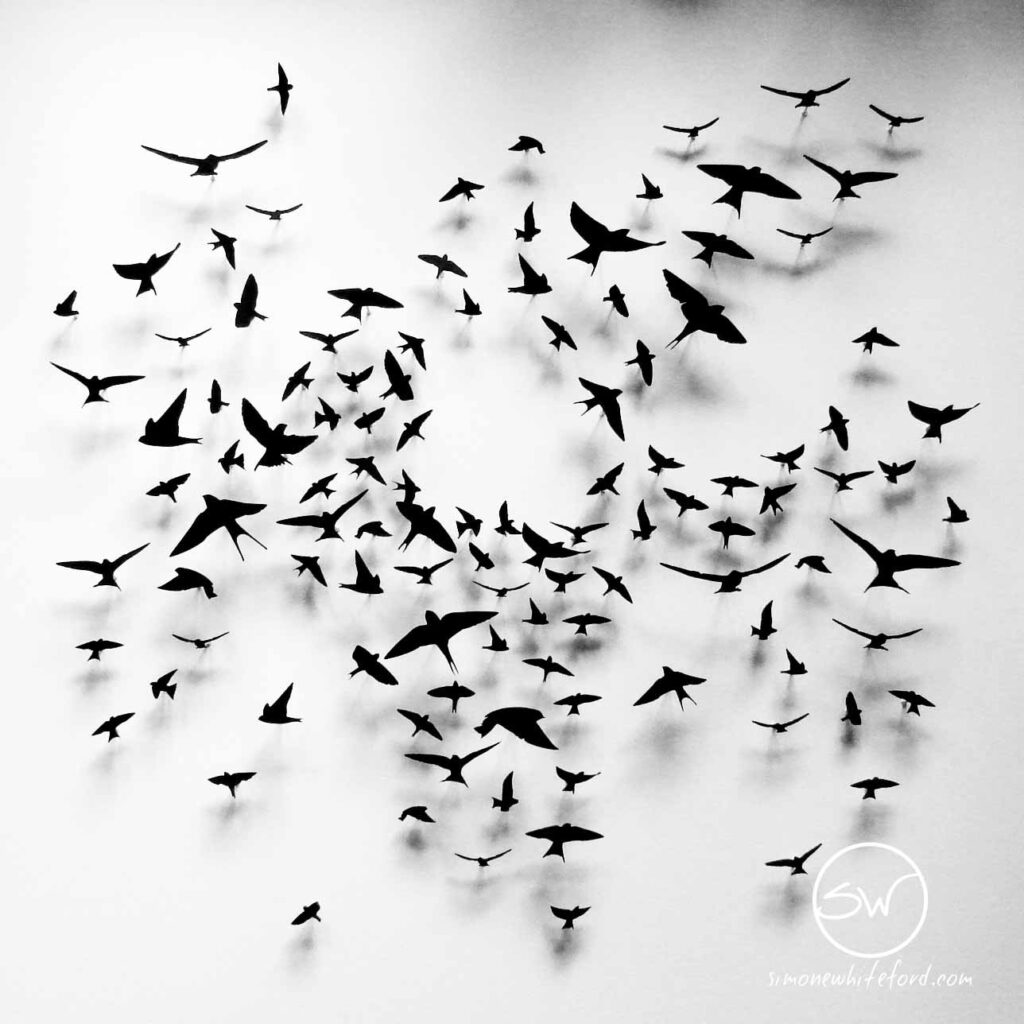
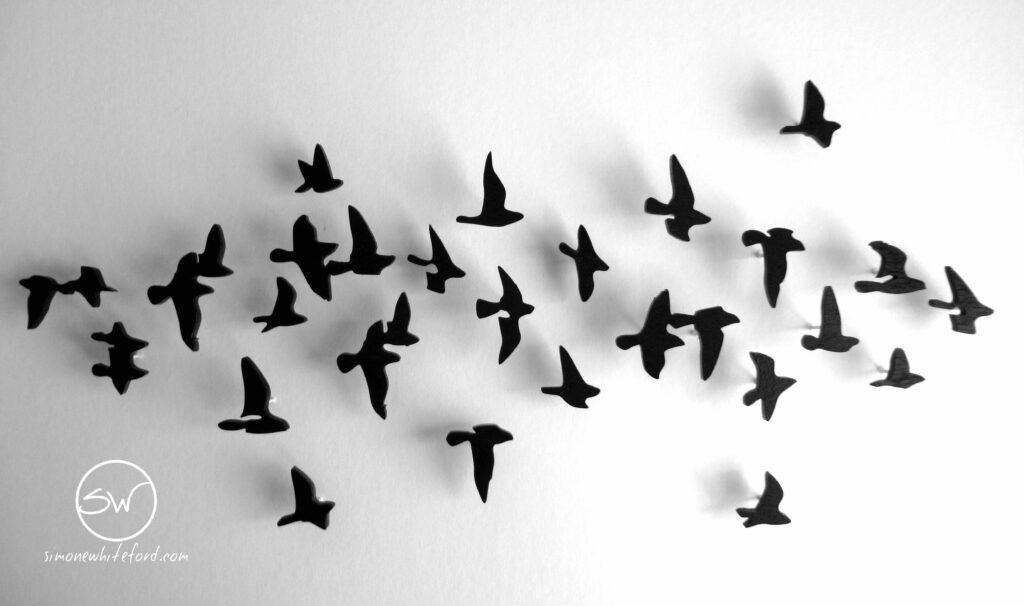
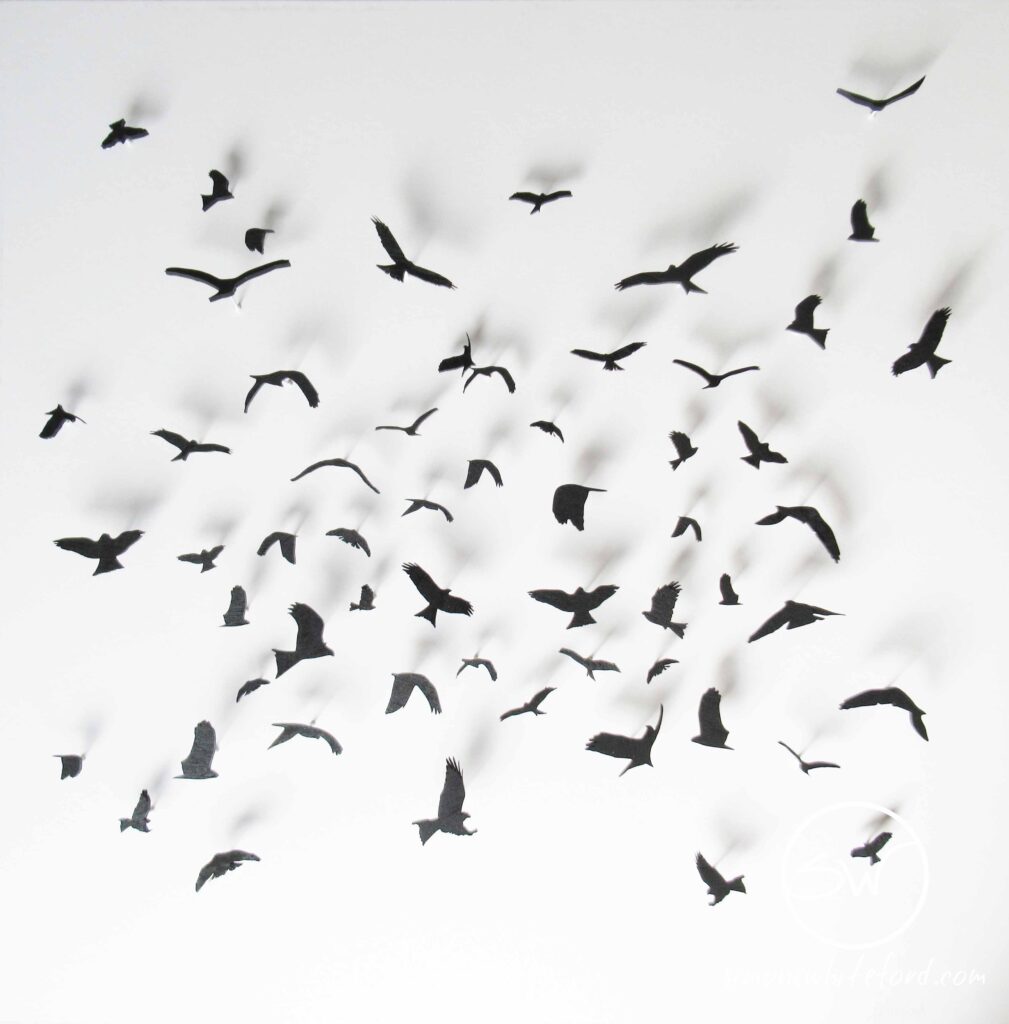
The box frames for the birds are all done by my local framer (I do not use ready-made frames bought in shops).
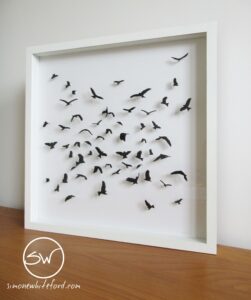
As you can imagine, drilling holes by hand into each bird just deep enough, so that the wires hold and not too deep that the wires show and then drilling the holes into the mount is tedious work, very repetitive, but I do not mind. Each new piece is exciting to look at. No final work is the same, though all show birds in different movements & interactions, which creates its own dynamic for each new piece.
Before the Open Studios Ayrshire exhibition and before the Swallows I made this small sculpture of Swallows. However the Swallows looked more like an illustration and not silhouettes of real birds. But it was the start of the Series: Distant Birds (I actually found an old photo of it).
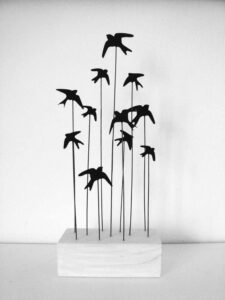
Soon I created some very large (height about 2m), refined versions of it in metal and hardwood base and continued to create smaller, more refined tabletop/windowsill sculptures.
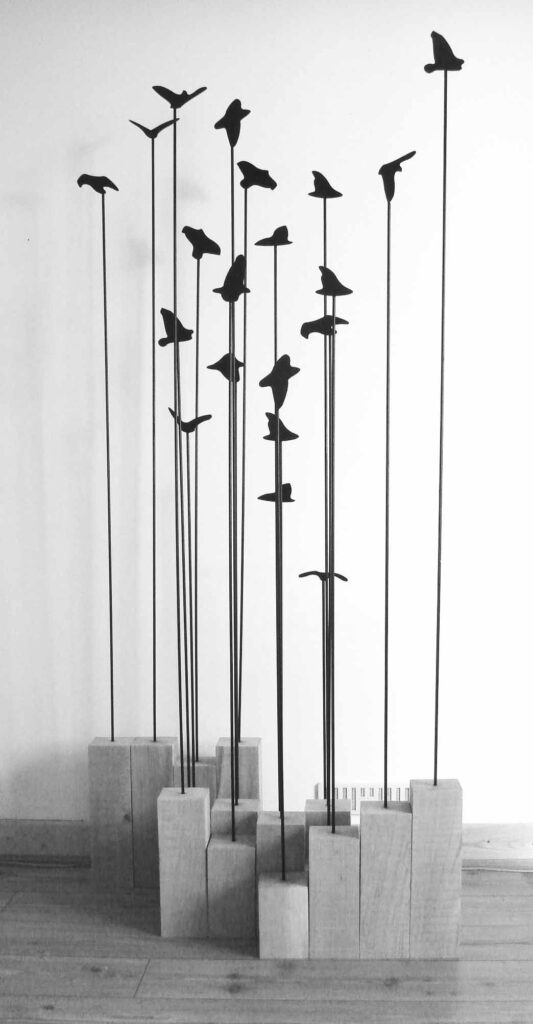
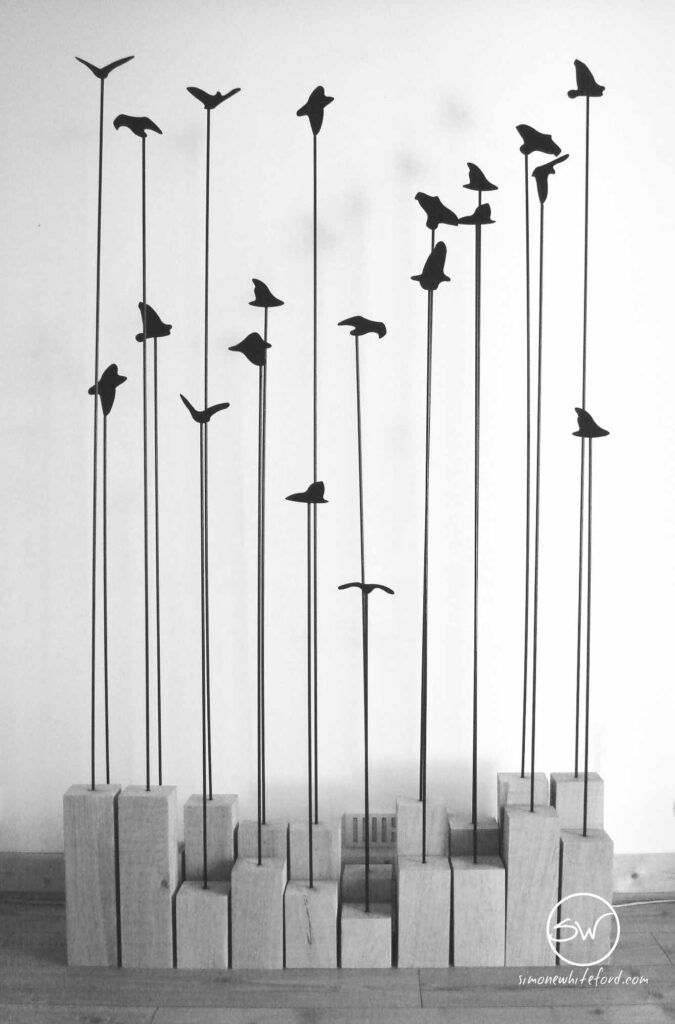
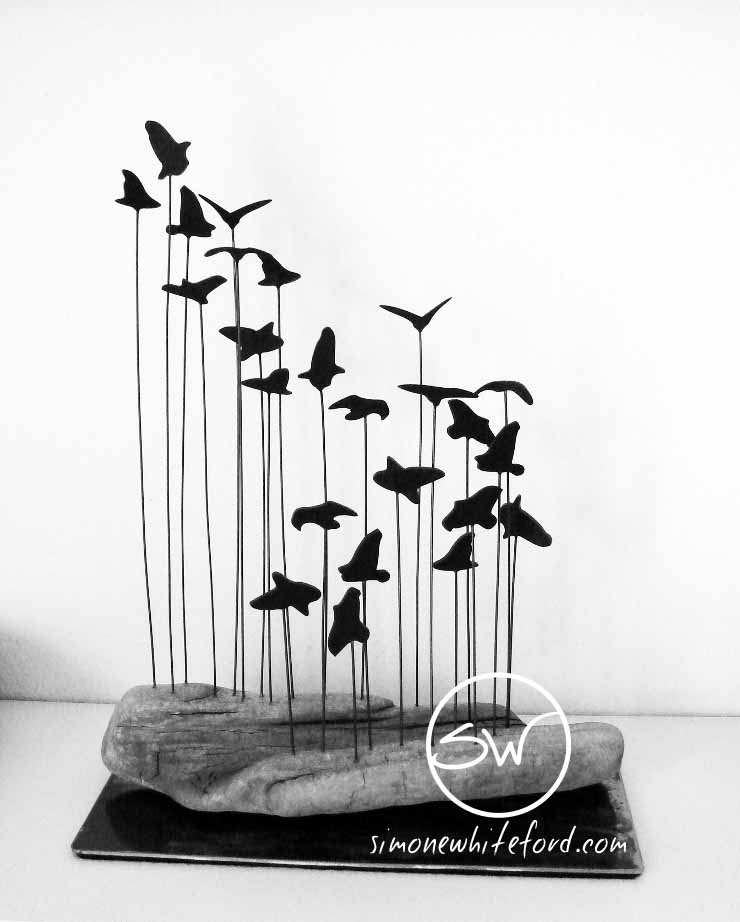
What I find fascinating with my birds (and yes I quite like them myself) are the different dynamics they create and that just like in Magritte’s painting “The treachery of images” (This is not a pipe) all the formation you see in my bird pictures never happened, but could happen. These birds are created and taken from bird images, mostly in flight situations from a distance, however it is my interpretation of birds in the sky. Nevertheless, you can look at it (forgetting that all is wood, wire & mount) as the essence of a flock of birds and therefore these birds, which have been digitally copied from a copy (photo) of real birds, become again what they have been in the first instance – flying birds.

